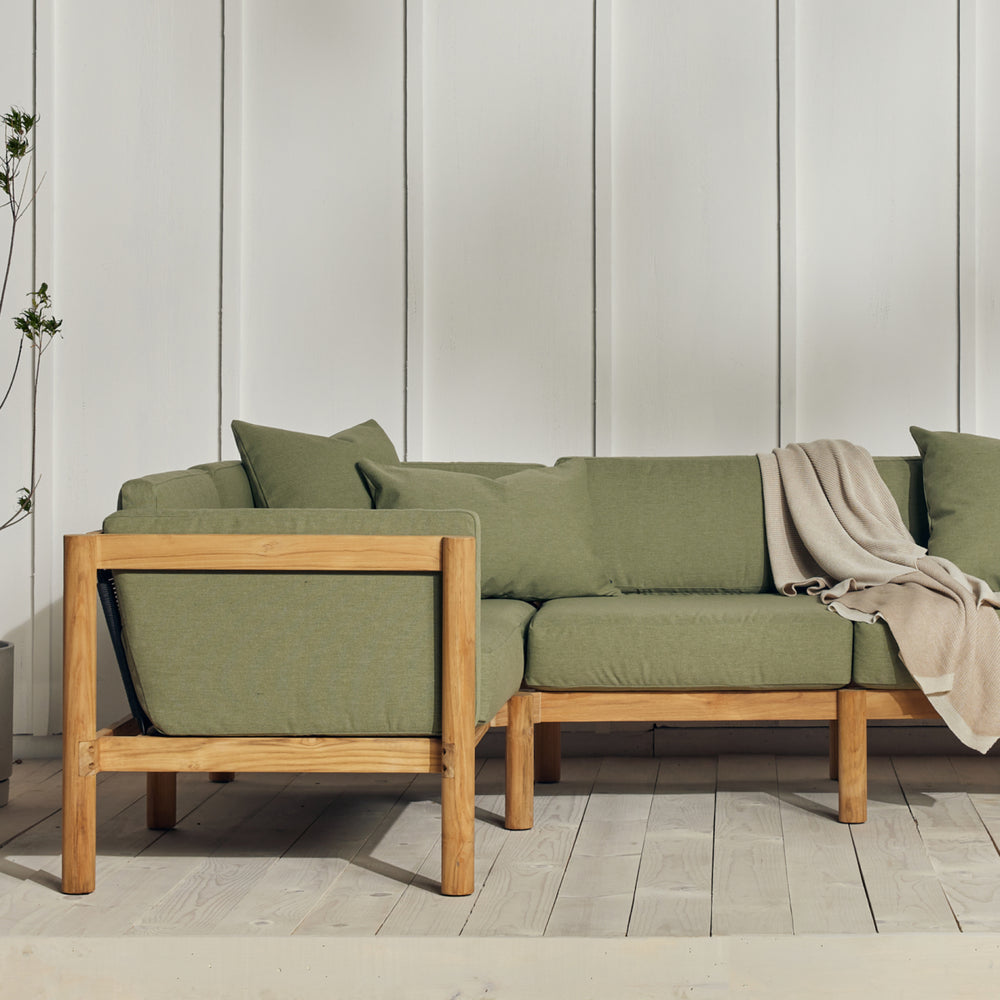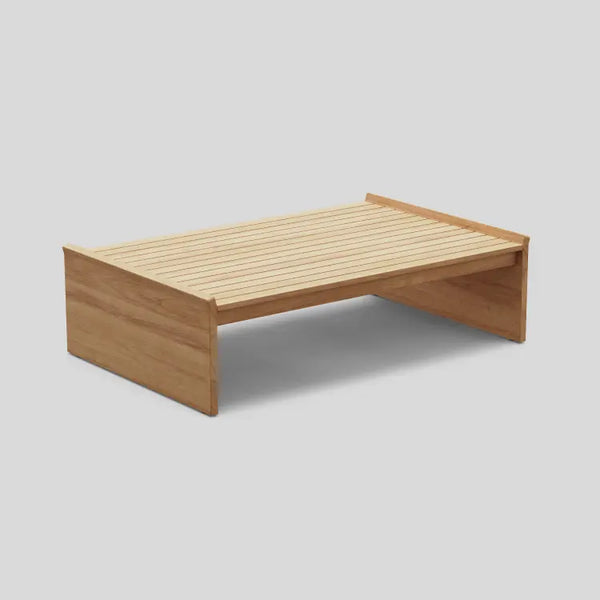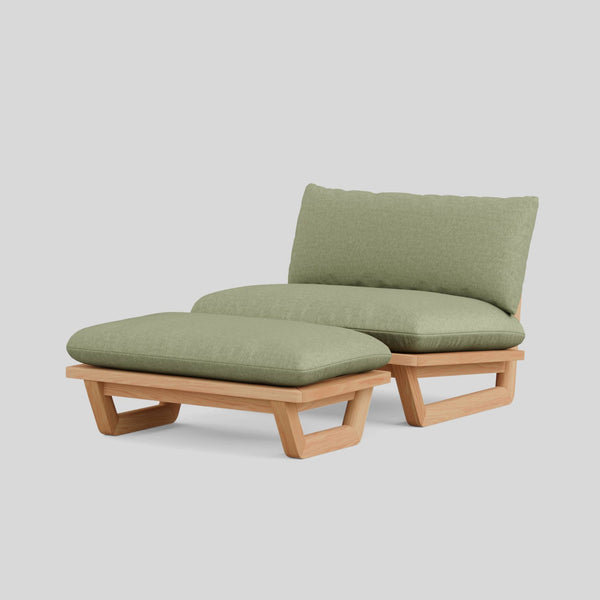Exploring the Origins of Teak Wood: Where Does It Come From?
Written by Neighbor Editorial Team | @neighboroutdoor | Opens in a new window. |
Originating from the Tectona grandis tree in Southeast Asia, teak wood’s global demand has spurred sustainable production in regions around the world.

Teak wood, a popular type of wood used in a wide range of applications, from furniture and flooring to boat building and outdoor decking, is known for its beautiful, golden-brown color, durability, and resistance to moisture and decay. But where does it come from?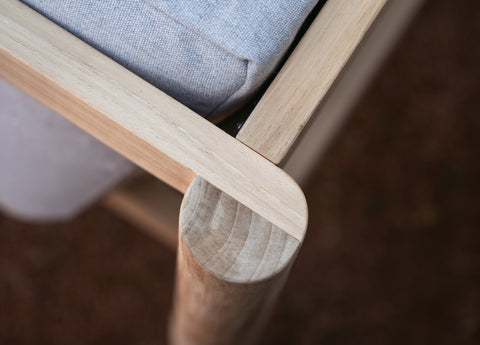
Understanding the origins of teak wood is important because it helps us appreciate the value of this remarkable material and the efforts taken to ensure its sustainability. In this article, we’ll explore all things teak wood — from its characteristics and historical uses to the regions where it grows naturally and the practices that support its responsible production.

Teak Wood: A Brief Overview
Teak wood, scientifically known as Tectona grandis, is a tropical hardwood that stands out with its stunning color and exceptional quality. As a deciduous tree, teak loses its leaves during the dry season, revealing its heartwood which is rich in those golden-brown hues that we love. It’s been used for centuries in various ways because of its strength and beauty. Another reason why it’s so valued is due to its high natural oil content which makes it water-resistant and extremely durable.
Despite its popularity, there’s a growing focus on ensuring the sustainability of teak wood. Efforts are being made to cultivate teak wood responsibly, so we can continue to enjoy its benefits without harming the environment. With that in mind, if you're considering purchasing teak wood furniture, you should look for choices that are FSC, SVLK, PEFC, and/or SFI-certified. FSC certification indicates that teak wood is sourced from responsibly managed forests, ensuring sustainable harvesting practices and environmental conservation. Similarly, SLVK certification signifies compliance with Indonesia's legal requirements for teak wood production, ensuring adherence to local forestry regulations and responsible harvesting in the region. PEFC and SFI certifications also hold significant importance in the industry, reflecting their commitment to sustainable forestry practices and responsible wood sourcing.
Let’s delve into the historical background of teak wood to understand its journey through time.
Historical Background of Teak Wood
Teak wood has a long and rich history that spans thousands of years. Ancient civilizations in Southeast Asia prized this wood for its remarkable properties and versatility. They recognized the strength and durability of teak wood, making it an excellent choice for shipbuilding, crafting furniture, and creating intricate decorative items. The cultural significance of teak wood extended beyond its practical uses — it held a special place in rituals and traditions.

The demand for teak wood led to the establishment of teak plantations and trade routes. The quality of teak wood varied among different regions, with Burmese teak, often referred to as “quality teak,” being highly regarded for its exceptional characteristics. Teak forests became valuable resources, driving exploration and trade. Over time, teak production methods evolved, with different types of teak wood being identified based on their characteristics.
Native Regions of Teak Wood
As mentioned, teak wood comes from the Tectona grandis tree, which thrives in warm and humid environments. The countries that provide the perfect climate and conditions for teak wood growth include Indonesia, India, Myanmar, Laos, and Thailand. These regions offer the right combination of rainfall, temperature, and soil type that allow teak trees to flourish.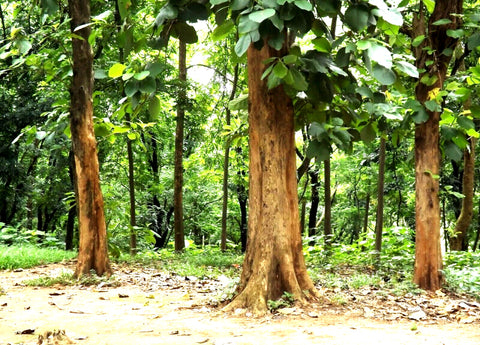
Indonesia: The World’s Leading Teak Wood Producer
Among the countries that produce teak wood, Indonesia stands out as the leading producer, accounting for around 40% of the global supply. The heartwood of Indonesian teak is highly valued for its quality and color, making it a preferred choice for furniture, boat building, and outdoor structures. The Indonesian government, through organizations like Perhutani, oversees teak wood production to promote sustainable methods. Specifically, Indonesia has its own certification, the SLVK certification, that ensures responsible farming and harvesting practices.
Other Major Teak Wood Producers
While Indonesia is the world’s leading producer of teak wood, other countries — including those in South America, Central America, and Asia — also play significant roles in the global teak industry. Each are notable producers that contribute distinct characteristics to the teak wood market. Let’s take a closer look at the teak wood production in some of these countries.
Laos
Laos stands as a notable teak wood producer, renowned for its high-quality teak that is valued for its appearance and durability. The teak from Laos boasts a unique blend of aesthetic appeal and strength, making it a sought-after choice for various applications.
Costa Rica
Costa Rica, on the other hand, has positioned itself as a hub of sustainable teak production. The country’s commitment to responsible cultivation practices ensures that its teak wood not only meets the demands of the market but also aligns with ecological balance, reflecting the growing global focus on environmental preservation.
Brazil
In Brazil, teak wood production offers a different twist with its unique color variations. The teak wood sourced from Brazil showcases a remarkable spectrum of colors, ranging from warm browns to reddish hues, giving builders and designers the opportunity to explore a distinct aesthetic when working with this wood.
Sustainable Teak Wood Production
Sustainable teak wood production is crucial for the long-term availability of this valuable resource. That’s why efforts are being made to ensure that teak wood is harvested responsibly, preventing overexploitation and environmental damage.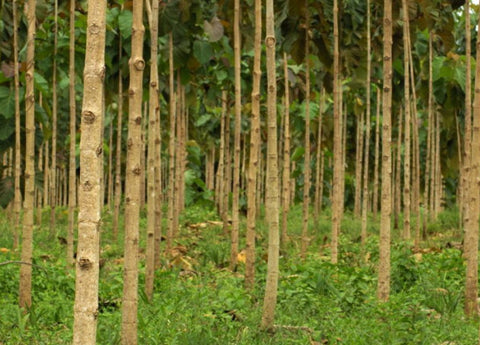
Certification systems and programs, such as those endorsed by the Forest Stewardship Council (FSC) and the Timber Legality Verification System (SVLK), help consumers identify sustainably sourced teak wood products. The SVLK certification, specifically, ensures that teak wood products adhere to legal and environmental standards in Indonesia, a major teak producer.
By supporting sustainable teak wood production and seeking products with these certifications, we can protect the environment, support local communities, and secure a reliable supply of high-quality wood for future generations.
Final Thoughts
Understanding the origins of teak wood helps us appreciate the value of responsible production and sustainable practices while appreciating its remarkable characteristics. By choosing teak wood products that are certified as sustainable, we contribute to the preservation of this valuable natural resource and ensure that its beauty and benefits endure for generations to come.
To discover the best outdoor furniture options that align with these principles and last the longest, explore our comprehensive guide here.
← Older Post Newer Post →

